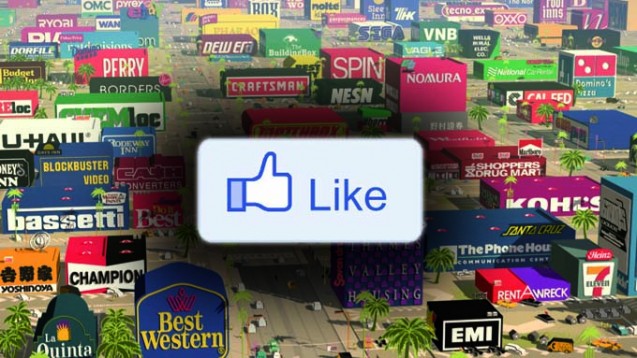About three weeks ago, I ran an ad campaign on Facebook for a fanpage that resulted in an increase of Likes from 100 to around 900. Success!

…or so I thought. After a week of posting content designed to engage the new audience and attract more new followers, the individual post Likes were averaging the same totals as prior to the campaign.
This was frustrating. My initial reaction was, “Hmm, maybe these ad-generated “Likes” that I’m getting are fake,” but all I had to go on was a few weeks’ worth of data and a hunch. That’s when I brought it up to Brent Csutoras of Kairay Media over a cup of coffee.
We came to the conclusion that there’s no way Facebook would stoop to generating fake Likes because of the enormous liabilities that would ensue. We blew it off and didn’t talk much about it again.

Then a bunch of articles came out last week covering a BBC investigation that alleges Facebook ad-generated Likes are not real: see money.msn.com, dailydot.com, and techcrunch.com.
After a second conversation with Brent this past weekend, together we decided to take a closer look at a number of Facebook ad campaigns which had low enough Like numbers to spot anomalies.
At first glance, the followers seem to be genuine. Most of them have profile pictures, cover photos, history, and activity levels. Then we found some interesting profiles like “Hilton,” who shows no activity except answering hundreds of Facebook polls and surveys.
Yet other profiles hadn’t had updates in more than a month, and a handful actually had no profile info at all, but these same accounts were extremely active, on a daily basis in some cases, at Liking Facebook pages. A pervasive red flag was that these profiles did not seem to have any discernible connection or affinity for the Facebook pages being advertised.
When we got into the actual Likes of these profiles, we started to see where the potential fraud was happening. These particular accounts all seemed to have an enormous number of Likes, with many totaling more than 10,000 and at a “Liking” rate of more than 500 a month.

…or so I thought. After a week of posting content designed to engage the new audience and attract more new followers, the individual post Likes were averaging the same totals as prior to the campaign.
This was frustrating. My initial reaction was, “Hmm, maybe these ad-generated “Likes” that I’m getting are fake,” but all I had to go on was a few weeks’ worth of data and a hunch. That’s when I brought it up to Brent Csutoras of Kairay Media over a cup of coffee.
We came to the conclusion that there’s no way Facebook would stoop to generating fake Likes because of the enormous liabilities that would ensue. We blew it off and didn’t talk much about it again.

Then a bunch of articles came out last week covering a BBC investigation that alleges Facebook ad-generated Likes are not real: see money.msn.com, dailydot.com, and techcrunch.com.
After a second conversation with Brent this past weekend, together we decided to take a closer look at a number of Facebook ad campaigns which had low enough Like numbers to spot anomalies.
At first glance, the followers seem to be genuine. Most of them have profile pictures, cover photos, history, and activity levels. Then we found some interesting profiles like “Hilton,” who shows no activity except answering hundreds of Facebook polls and surveys.
Yet other profiles hadn’t had updates in more than a month, and a handful actually had no profile info at all, but these same accounts were extremely active, on a daily basis in some cases, at Liking Facebook pages. A pervasive red flag was that these profiles did not seem to have any discernible connection or affinity for the Facebook pages being advertised.
When we got into the actual Likes of these profiles, we started to see where the potential fraud was happening. These particular accounts all seemed to have an enormous number of Likes, with many totaling more than 10,000 and at a “Liking” rate of more than 500 a month.

No comments:
Post a Comment